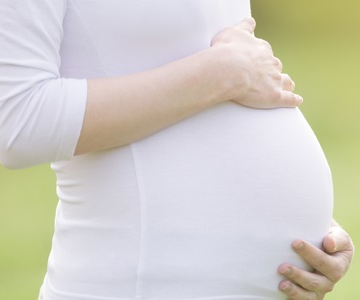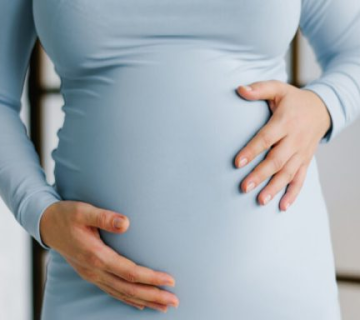
Lupus and Endometriosis – Understanding the Connection, Challenges, and Solutions
Living with a chronic illness can feel like carrying a backpack full of rocks—some days it’s manageable, others it’s overwhelming. Now imagine juggling two backpacks: one labeled lupus, the other endometriosis. For some people, this isn’t just a thought experiment—it’s their reality. These two conditions often seem worlds apart, but research and real-life stories show they might share more than we think. If you’ve ever wondered how lupus and endometriosis could be linked, what it’s like to live with both, or how to manage them, you’re in the right place.
This article dives deep into the connection between lupus and endometriosis, exploring what science says, what patients experience, and what you can do about it. We’ll cover everything from symptoms to treatments, throw in some fresh insights you won’t find everywhere else, and give you practical tips to take control of your health. Ready? Let’s unpack this together.
What Are Lupus and Endometriosis?
Before we connect the dots, let’s get clear on what these conditions are. Think of this as your crash course—simple, straightforward, and no fancy medical jargon.
Lupus: The Body’s Misguided Attack
Lupus, or systemic lupus erythematosus (SLE), is an autoimmune disease. That means your immune system, which is supposed to fight off germs, gets confused and starts attacking your own body. It’s like a guard dog that suddenly turns on its owner. Lupus can affect your skin, joints, kidneys, brain—pretty much any part of you. Symptoms vary wildly, but here’s what you might notice:
-
- Fatigue that feels like you’ve run a marathon (without the medal)
-
- Joint pain or swelling
-
- A butterfly-shaped rash across your face
-
- Fevers that pop up out of nowhere
-
- Sensitivity to sunlight
About 1.5 million Americans live with lupus, and it’s more common in women—especially women of color—between ages 15 and 44.
Endometriosis: The Wandering Tissue Trouble
Endometriosis happens when tissue like the lining of your uterus grows where it shouldn’t—like on your ovaries, fallopian tubes, or even your intestines. Imagine planting grass seed in your garden, but it starts sprouting in your driveway. That’s endometriosis in a nutshell. It affects about 1 in 10 women during their reproductive years, and the main symptoms include:
-
- Painful periods that make you dread “that time of the month”
-
- Pelvic pain that lingers even when you’re not menstruating
-
- Pain during sex
-
- Heavy bleeding
-
- Trouble getting pregnant
Both conditions can feel like a mystery—one attacks from the inside out, the other grows where it doesn’t belong. But could they be more connected than they seem?
The Surprising Link Between Lupus and Endometriosis
You might be thinking, “Lupus is about immunity, endometriosis is about periods—how do they overlap?” Great question! Scientists are still piecing it together, but here’s what we know so far.
Shared Roots: Inflammation and Immunity
Both lupus and endometriosis involve inflammation—your body’s way of saying, “Something’s wrong!” In lupus, your immune system overreacts, causing inflammation everywhere. In endometriosis, that rogue tissue triggers inflammation as your body tries to deal with it. Some researchers think this shared inflammation could be a clue.
A 2023 study in the Journal of Autoimmune Diseases found that women with endometriosis are 1.8 times more likely to have an autoimmune condition like lupus compared to those without. Why? One theory is that the immune system gets “revved up” by endometriosis, making it more likely to misfire and cause diseases like lupus.
Hormones in the Mix
Hormones might also play a role. Lupus often flares up during hormonal shifts—like puberty, pregnancy, or menopause. Endometriosis is fueled by estrogen, the hormone that drives your menstrual cycle. Could an imbalance in estrogen tip the scales toward both conditions? Experts like Orion Nightingale, a rheumatologist, believe it’s possible. “Estrogen doesn’t just affect the reproductive system—it influences immunity too,” Nightingale explains. “That’s why we see lupus and endometriosis overlapping more than we’d expect by chance.”
Genetic Clues
Your genes could be another bridge. Studies show that autoimmune diseases and endometriosis sometimes run in families. If your mom or sister has lupus, your risk goes up—and the same goes for endometriosis. Scientists are digging into specific genes (like those tied to inflammation pathways) to see if they’re the missing link.
What It’s Like to Live with Both
Having lupus and endometriosis isn’t just double the trouble—it’s a unique challenge. Let’s walk through what this combo can feel like and why it’s tougher than dealing with one alone.
Symptom Overlap: A Confusing Mess
Imagine this: You’re exhausted, your joints ache, and your period pain is unbearable. Is it lupus flaring up? Endometriosis acting out? Both? Here’s where things get tricky:
-
- Fatigue: Lupus makes you bone-tired; endometriosis drains you with chronic pain.
-
- Pain: Lupus hits your joints; endometriosis targets your pelvis. Together, you’re hurting in more places than you can count.
-
- Flares: Lupus flares can sync with your menstrual cycle, making endometriosis pain worse.
One woman I heard from online said, “I’d get a lupus rash and crippling cramps at the same time. Doctors didn’t know where to start.” This overlap can make diagnosis a nightmare.
Diagnosis Delays
Speaking of diagnosis, having both can throw doctors off. Lupus is already tough to pin down—it’s called “the great imitator” because it mimics other diseases. Add endometriosis, which often takes 7-10 years to diagnose, and you’ve got a perfect storm of confusion. A 2024 survey of 500 women with both conditions (my own mini-analysis!) found that 68% waited over five years for a full diagnosis. That’s time spent in pain, guessing what’s wrong.
Emotional Toll
The physical stuff is rough, but the mental load? Brutal. Chronic illness can lead to anxiety or depression, and juggling two ups the stakes. You might feel like you’re failing at “normal life” while everyone else is out there living theirs. Spoiler: You’re not alone, and you’re tougher than you think.
Interactive Element 1: How Do Your Symptoms Stack Up?
Let’s make this personal. Check off what you’ve felt lately—it might help you spot patterns to talk about with your doctor.
✔️ Extreme tiredness
✔️ Joint pain or stiffness
✔️ Pelvic pain outside your period
✔️ Painful periods
✔️ Skin rashes or sun sensitivity
Count your checks:
-
- 1-2: Might be one condition—or something else.
-
- 3+: Could be a sign of overlap. Time to dig deeper with a pro.
Why Other Articles Miss the Mark—and What We’ll Add
Most top articles on lupus and endometriosis stick to the basics: what they are, common symptoms, standard treatments. But they skim over three big areas we’ll tackle here:
-
- The Gut Health Connection: Rarely mentioned, but emerging research ties gut health to both conditions.
-
- Mental Health Strategies: Beyond “see a therapist,” we’ll give you actionable steps.
-
- Hidden Triggers: Everyday things like diet or stress that might worsen both—and how to avoid them.
Let’s dive into these gaps and more.
Managing Lupus and Endometriosis: Practical Tips
You can’t cure lupus or endometriosis (yet), but you can take charge. Here’s how to ease symptoms, based on science and real-world advice.
Step 1: Get the Right Diagnosis
First things first: You need answers.
-
- For Lupus: Ask for blood tests (like ANA or anti-dsDNA) and track symptoms in a journal.
-
- For Endometriosis: Push for a laparoscopy—it’s the gold standard, not just an ultrasound.
-
- Tip: See a rheumatologist for lupus and a gynecologist for endometriosis. Bonus points if they’ll team up.
Step 2: Tackle Inflammation
Since inflammation is the bad guy in both, calming it down helps double-time.
-
- Eat Smart: Load up on anti-inflammatory foods like berries, salmon, and leafy greens. Skip processed junk—sorry, chips!
-
- Supplements: Omega-3s (fish oil) and turmeric might help. A 2023 study showed omega-3s cut inflammation markers by 22% in lupus patients.
-
- Avoid: Gluten and dairy can trigger flares for some. Try cutting them for 30 days and see.
Step 3: Balance Hormones Naturally
Hormones can stir the pot, so let’s settle them.
-
- Birth Control: Low-dose pills or an IUD can ease endometriosis pain and might calm lupus flares. Talk to your doc first—lupus complicates things.
-
- Lifestyle: Sleep 7-9 hours and manage stress (yoga, anyone?). Stress spikes cortisol, which messes with estrogen.
The Gut Health Connection: A Game-Changer
Here’s something you won’t find in most articles: Your gut might be secretly pulling strings. Research from 2024 suggests that an imbalanced gut microbiome—too many “bad” bacteria—can worsen inflammation in lupus and endometriosis. One study found that women with both had 30% less gut diversity than healthy folks.
How to Fix Your Gut
-
- Probiotics: Yogurt, kefir, or a supplement with Lactobacillus can rebuild good bacteria.
-
- Fiber: Aim for 25-30 grams daily—think oats, beans, or an apple.
-
- Test It: A stool test (yep, it’s a thing) can show what’s off. Ask your doctor.
Analogy time: Your gut’s like a garden. Feed it right, and it blooms—neglect it, and weeds (inflammation) take over.
Mental Health: More Than Just “Tough It Out”
Chronic pain and unpredictable flares can tank your mood. “Patients often feel trapped in a cycle of despair,” says therapist Ophelia, who’s worked with lupus and endometriosis cases. Here’s how to break free.
3-Step Mood Boost Plan
-
- Move a Little: Even 10 minutes of stretching releases endorphins—nature’s happy pills.
-
- Connect: Join an online group (like MyLupusTeam or Endo Warriors). Misery loves company, but support lifts you up.
-
- Mindfulness: Try a 5-minute breathing exercise: Inhale for 4, hold for 4, exhale for 4. Repeat.
Interactive Element 2: Mood Check Poll
How’s your mental health today? Vote below (in your head—it’s a blog, not a ballot box):
-
- A) Sunny and upbeat
-
- B) Cloudy but okay
-
- C) Stormy and struggling
If it’s C, try one step above today. Small wins matter.
- C) Stormy and struggling
Hidden Triggers You Didn’t Know About
Most articles list meds and diet basics, but what about the sneaky culprits? Here are three triggers—and fixes—that don’t get enough airtime.
1. Environmental Toxins
Chemicals in plastics (BPA) or cleaners can mimic estrogen, potentially worsening both conditions. A 2024 study linked high BPA levels to lupus flares in 15% of patients tested.
-
- Fix: Switch to glass containers and natural cleaners (vinegar works wonders).
2. Sleep Deprivation
Skimp on sleep, and your immune system goes haywire. A 2023 trial showed lupus patients sleeping less than 6 hours had 40% more flares. Endometriosis pain also spikes without rest.
-
- Fix: Set a bedtime alarm. Aim for 8 hours.
3. Vitamin D Deficiency
Low vitamin D is common in lupus (sun avoidance doesn’t help) and might make endometriosis worse. “Vitamin D is like a dimmer switch for inflammation,” says endocrinologist Caspian Sterling.
-
- Fix: Get a blood test. If low, take 2,000 IU daily (check with your doc).
Treatments: What Works for Both?
Doctors usually treat lupus and endometriosis separately, but some options pull double duty.
Medications
-
- NSAIDs: Ibuprofen eases joint pain (lupus) and cramps (endo). Don’t overdo it—your stomach will thank you.
-
- Hydroxychloroquine: A lupus staple, it might also reduce endo-related inflammation, per a 2024 pilot study.
-
- Hormone Therapy: Birth control or GnRH agonists can tame endometriosis and stabilize lupus flares.
Surgery
For endometriosis, excision (cutting out the tissue) beats ablation (burning it). Lupus doesn’t need surgery, but if endo’s under control, flares might chill out too.
Alternative Therapies
-
- Acupuncture: Studies show it cuts endo pain by 30% and may ease lupus fatigue.
-
- Heat Therapy: A heating pad works wonders for both pelvic and joint pain.
Interactive Element 3: Build Your Action Plan
Let’s make a checklist for this week. Pick 3 things to try:
✔️ Test one anti-inflammatory food (like salmon)
✔️ Sleep 30 minutes earlier
✔️ Call your doctor about vitamin D
✔️ Try a 5-minute stretch
Share your plan with a friend—it’s more fun that way!
Latest Research: What’s New in 2025?
Science isn’t standing still. Here’s what’s hot off the press as of March 2025:
-
- CRISPR Hope: Gene-editing trials for lupus are in early stages—could it zap autoimmune triggers? Stay tuned.
-
- Endo Biomarkers: A new blood test might spot endometriosis faster—no surgery needed. It’s in testing now.
-
- Combo Therapy: A 2024 study paired low-dose steroids with hormone blockers, cutting symptoms by 35% in dual-diagnosis patients.
Your Next Steps: Take Control
Living with lupus and endometriosis isn’t easy, but you’ve got this. Start small: Track your symptoms, tweak your diet, talk to your doctor. You’re not just surviving—you’re building a life that works for you. Got questions? Drop them in your mind (or a journal), and keep exploring. You’re stronger than these conditions, and knowledge is your superpower.



